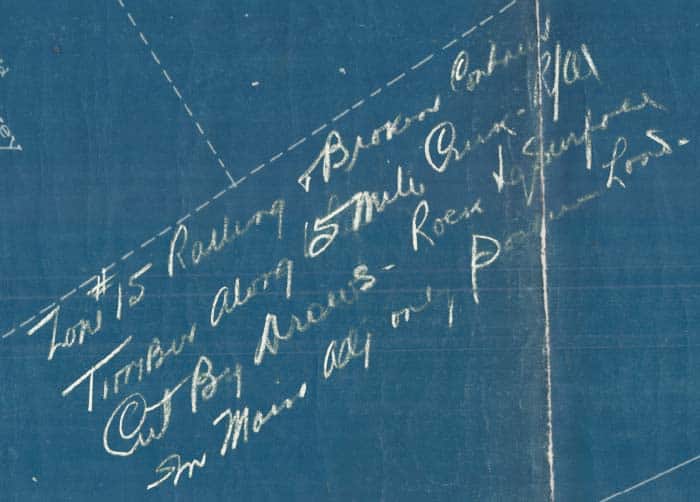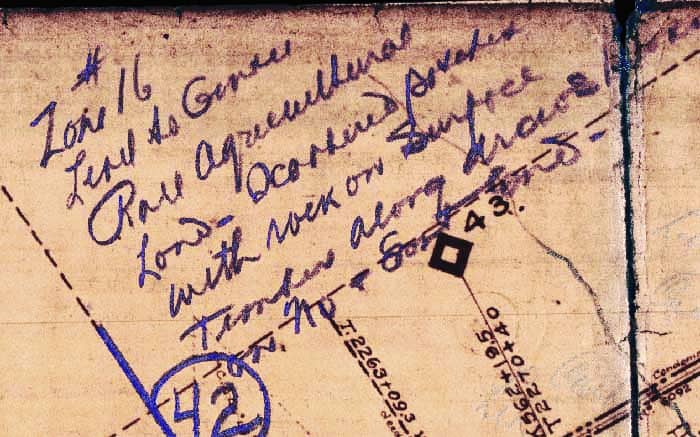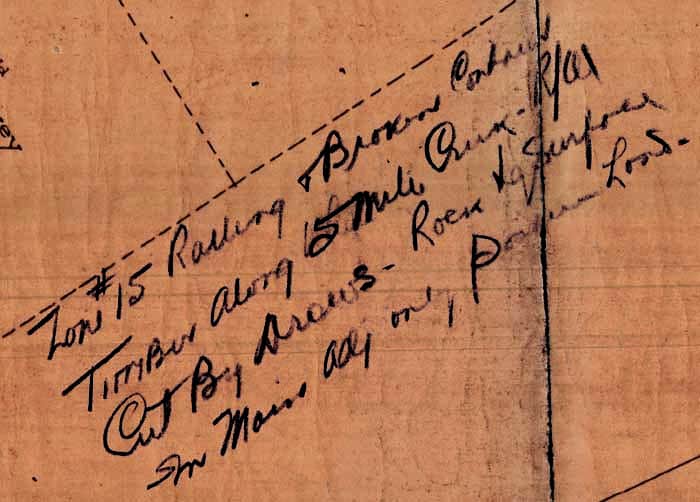Here is a handwritten notation from about 1918, rendered whitish instead of the original yellow via the magic of Photoshop. The main clue is that it is on a railroad valuation map and "Zone #16" appears to pertain to a mile of the line. What does the notation say?
Land so ????? Raw agricultural Land ????? ?????? with rock on surface. Timber along ?????
Best I can do at 12:40 am et, lol
Level to gentle roll...Agricultural Land... Scattered swales with rock on surface...Timber along draws...
Holy Cow, post: 377116, member: 50 wrote: Level to gentle roll...Agricultural Land... Scattered swales with rock on surface...Timber along draws...
I'm thinking it's "patches" instead of "swales", but otherwise I think you've got it. That map is an excellent example of why buying a color scan of railroad valuation maps from NARA is worth the money. It is much easier to enhance the colored pencil in a color image in Photoshop than it would be in B&W.
Holy Cow, post: 377116, member: 50 wrote: Level to gentle roll...Agricultural Land... Scattered swales with rock on surface...Timber along draws...
Very close but no cigar.
It's not Swales but patches.
Zone 16
Level & Gentle
Roll. Agricultural
Land - Scattered Gravels
with rock on surface
Timber along draws & breaks
on No. & East end.
Maybe it is scrapes instead of swales. Jerry is terribly close.
Glad you know that word is pasture. I will agree that it does make a nice "P".
What the heck are the words before pasture on that line?
I taught myself a little trick years ago for this type of stuff.
When looking at old notes or plats especially ones that were on microfiche and having trouble with the script.
I found that if you inverted the image to a negative view, it made it a little more easier to read . At least for me.
Holy Cow, post: 377164, member: 50 wrote: What the heck are the words before pasture on that line?
This is the best I can do so far:
Zone#15 Rolling & Broken Country
Timber along 5 Mile Creek - R/W
Cut by draws- Rock to Surface
Sm[all?] ___ adj only Pasture Land
Yes I forgot to add that tweaking in photo elements such as convert to b/w or enhance before inverting.
I think the brain is conditioned to read black script on white.
Saves on printer ink too which is a whole other issue dealing with this stuff. : )










